The Hottest Restaurants and Bars to Try in Barcelona Right Now
An insider reveals where locals are flocking for futuristic cocktails, pitch-perfect seafood, and tourist-free tapas.
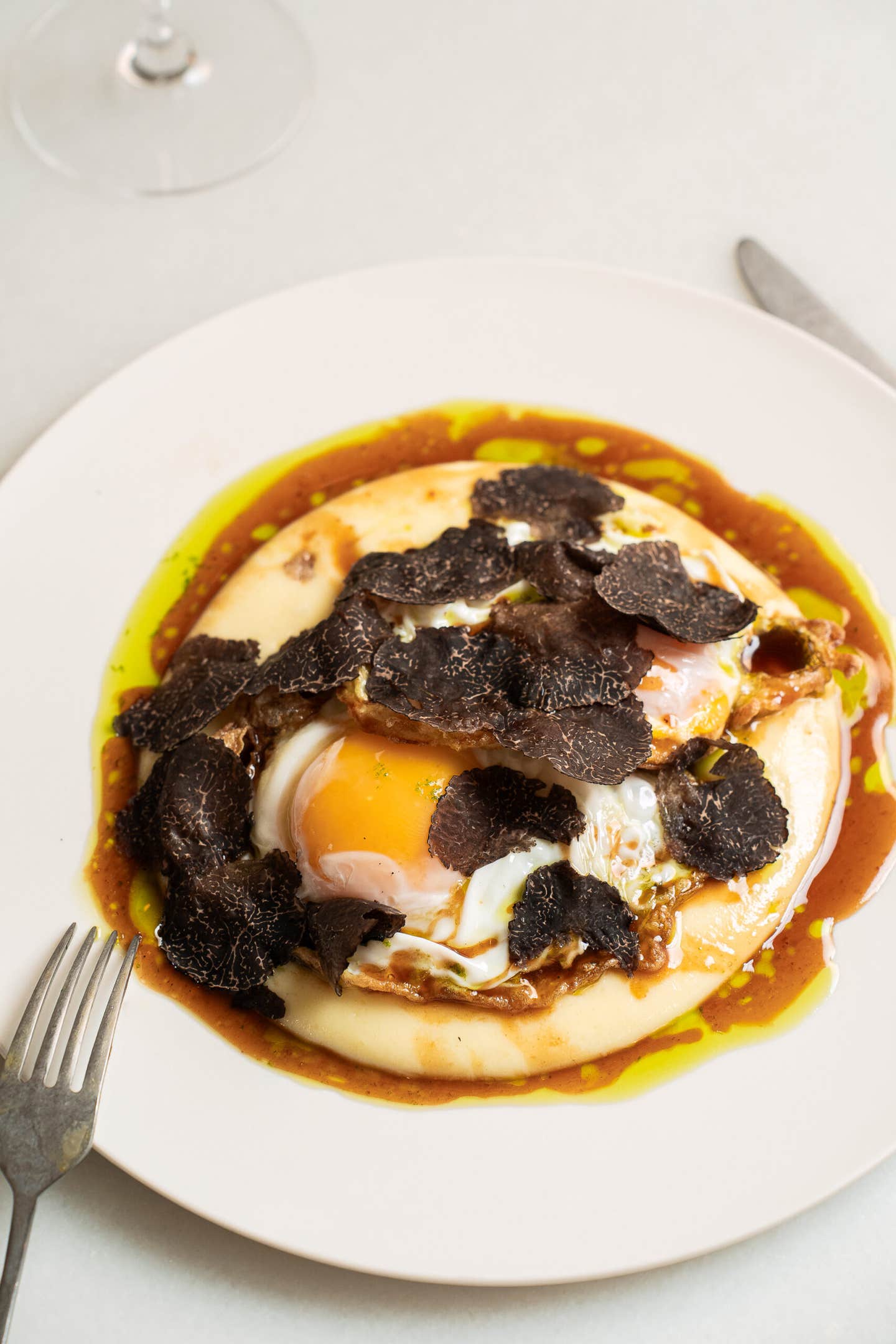
Until a few decades ago, Barcelona wasn’t what you’d call a first-class food town. Yes, it had great raw materials, marvelous markets, and a rib-sticking regional cuisine with medieval roots. Yet often I found, during my earliest forays into the city back in the 1980s, that restaurant-eating in the Catalan capital was uninspiring: The choices were basically calorific classics (the all-in stew escudella being omnipresent), rice dishes, or char-grilled fish.
Then the 1992 Olympics happened, and Barcelona morphed practically overnight into a scintillating culture-hub—and the city’s food scene followed suit. All at once there was East-West fusion food and Ferran Adrià-inspired molecular gastronomy—rather too much of that, maybe—but also a brave new vision of contemporary Catalan cuisine. It was a great time to be writing about Barcelona food—and I did, in a large-format cookbook for Williams-Sonoma (Foods of the World: Barcelona), which 20 years later reads almost like a work of culinary nostalgia.
What came next rolled in like waves on a Mediterranean beach. The 2010s brought food-trucks, supper-clubs and pop-ups; restaurants that only served dessert; Japo-Hispanic sushi joints ... In recent years, Barcelona has gotten big into natural wine bars, cocktail bars to conjure with, and teeny-weeny market stalls with zippy zero-kilometer cooking. Tapas—which were never one of Barcelona’s traditional strengths—have finally triumphed, opening the kitchen door to fresh fads in snacking—none more appetizing, in my view, than a revival of the Catalan midday vermouth ritual and the salty-vinegary aperitif repertoire that goes with it.
And now? Well, it’s as if Barcelona has Magi-mixed all these historic tendencies into a richly delicious emulsion. Places that were once super-hip have become neighborhood standbys, while been-there-forever, dyed-in-the-wool haunts have returned to the forefront of fashion.
Today’s trends seem destined to seep more permanently into the city’s gastro DNA. Down to the bread and beer, there’s a mainstream embrace of seasonality, craft, plant-based eating, and high-quality ingredients—values that are front and center at a new crop of intimate, bistro-esque restaurants that cropped up during the pandemic. Often situated in less-touristed parts of town, helmed by a sole (often young) chef, and with a handful of tables, these cozy neighborhood joints are notable for being oriented more toward the euro than the tourist dollar. The impulse to be small-scale, hands-on, flexible, and free is surely a sign of the times. But if Barcelona has one thing clear right now, it’s the importance of Big Flavor over every other consideration. And for the food-fixated traveler, that’s a serious advantage.
Calle Balmes, 187
+34 932 176 552
Is it a bar? Is it an asador (grill)? Behind a 1970s shopfront lies this unclassifiable eatery that’s been all the rage since it opened its doors mid-pandemic. Chefs Borja García and Adrià Cartró specialize in seasonal produce with maximum TLC, and seating arrangements follow the typical Spanish gastro-bar model: best to sit up at the bar to watch the frenzied goings-on in the tiny kitchen. Start with an appetizer of crisp pork chicharrones and home-pickled baby onions, then follow that with mackerel escabeche, char-roast vegetable escalivada, a handful of langoustines still sizzling from the teppanyaki, thinly sliced smoked beef tongue … García and Cartró have no truck with garnishing, saucing, or otherwise gussying up these good and simple things: What you see is, essentially, what you get. Either way, pretty much everything is sensational here—including the fun, boisterous vibe.
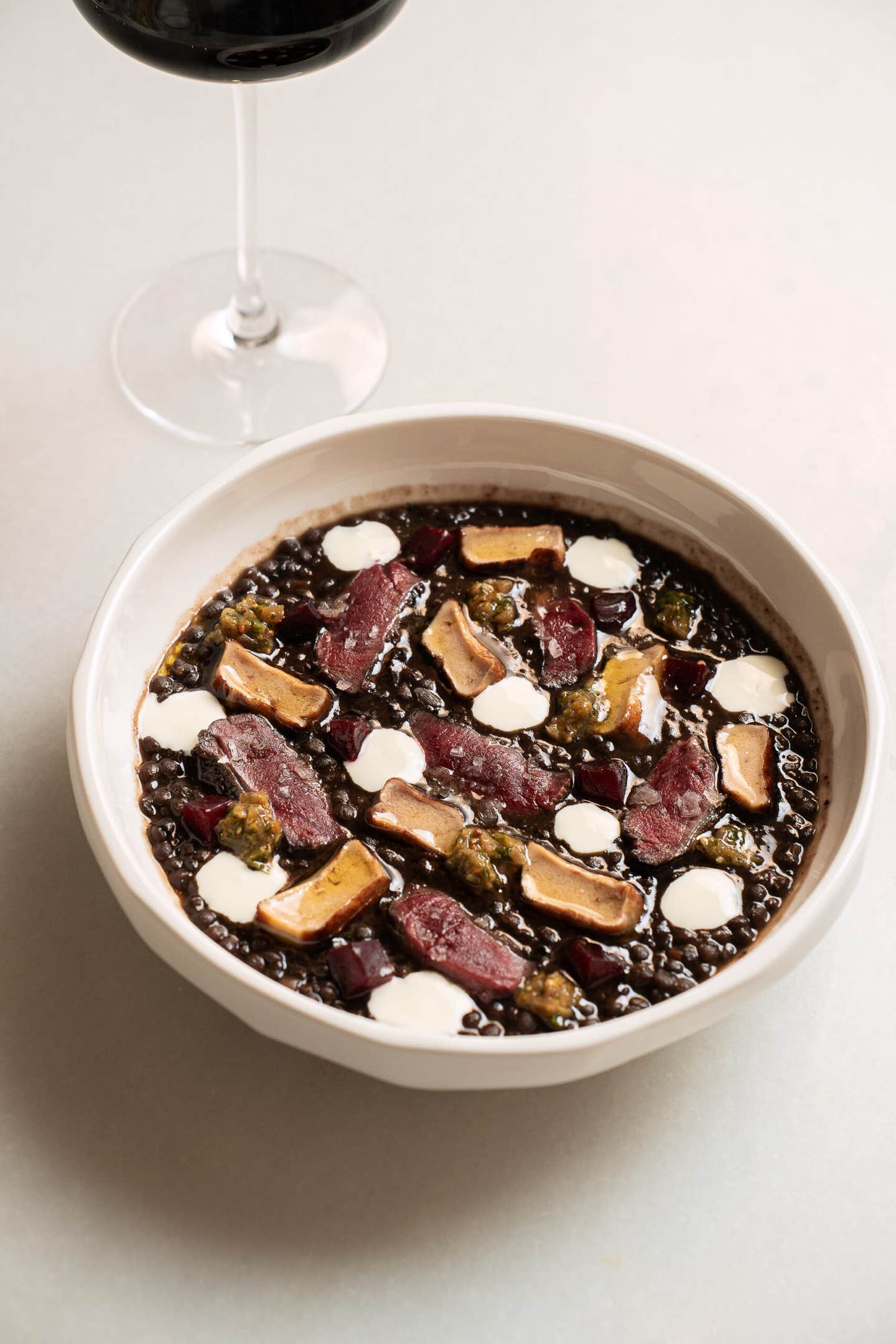
Carrer Mansó, 54
+34 936 046 753
In which chef Victor Ródenas, Barcelona born and bred, draws on the fabulous produce at Mercat de Sant Antoni for a short daily menu that fizzes with imagination. Consider, for instance, a lunch of ajoblanco with tomato slush and fresh tuna, rigatoni stuffed with royale of hare, and slow-roast lamb with Idiazabal cheese and tarragon cream. Thanks to Maleducat (whose name means “Badly Raised”) and a handful of other rebellious chef-powered bistrots, the salt-of-the-earth neighborhood of Sant Antoni at the western end of the Eixample has seen its gastro credentials soar. If this casa de menjars (eating house) has a deliberately plain and workmanlike look about it, the food is anything but basic.
Carrer Sant Antoni dels Sombrerers, 3
+34 932 689 197
If there’s one thing Rafa Zafra understands better than most of his chef contemporaries, it’s that sourcing the very best seafood—say, anchovies from the Cantabrian Sea or big fat shrimps from Roses—is more important than fussy preparations. I like the way Zafra cooks clams, for instance, sautéing them with nothing more fancy than a splash of fino sherry. His chipirones (baby squid), another highlight, are crisp-fried in EVOO, Andalusian-style, and arrive with a side of squid-ink mayonnaise. Desserts, too, have a simple elegance: Zafra starts his flan in the steamer, then rests in a bain-marie for a sublimely silky rendition of this Spanish classic. “Estimar” is Catalan for “to love.” And I do.
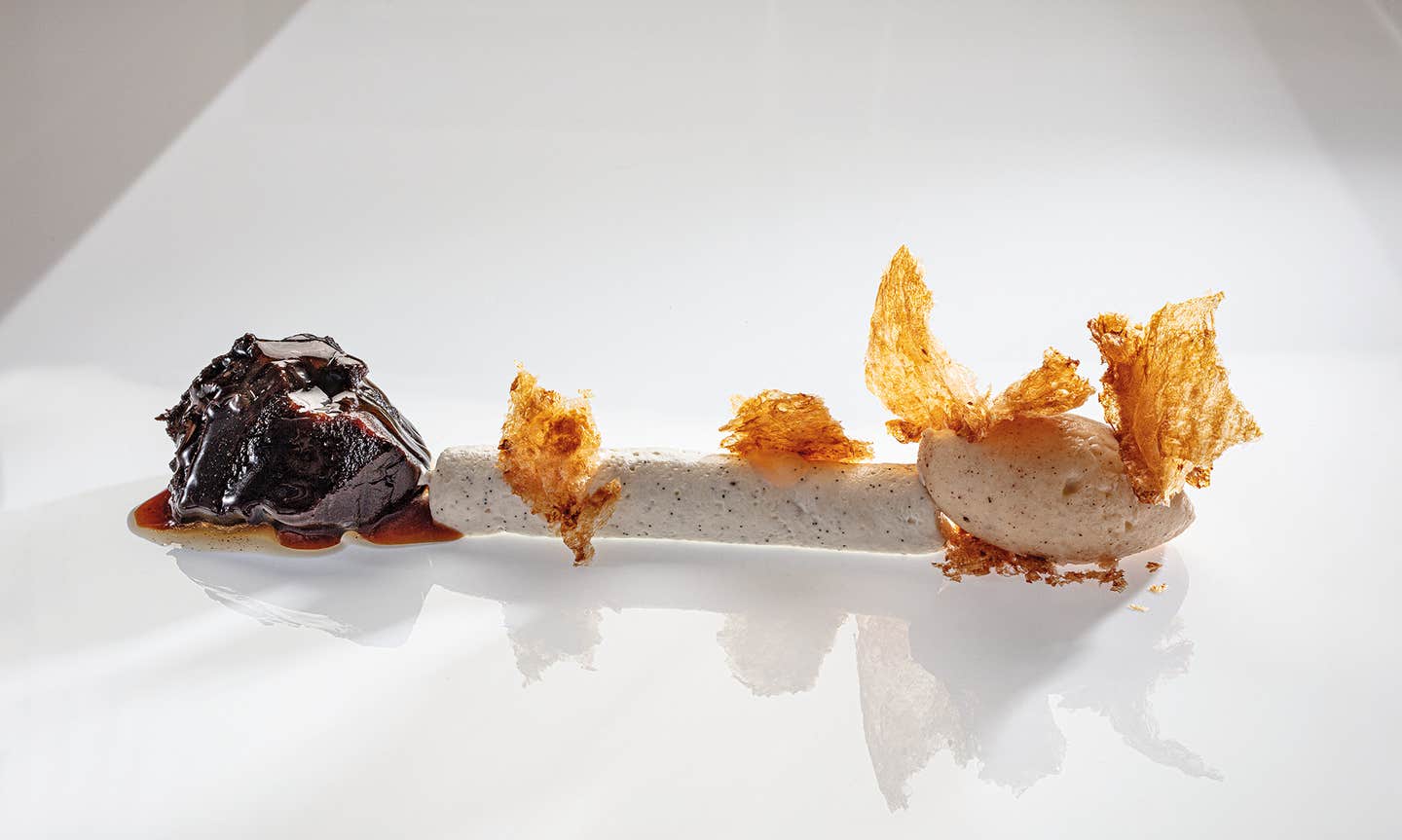
Carrer Villarroel, 163
+34 933 486 896
Whatever you think of the global hit parade that last year proclaimed Disfrutar the best in Europe and second best in the whole wide world, you’re sure to be awestruck by the terrifically avant-garde $315 tasting menu. Chefs Eduard Xatruch, Oriol Castro, and Mateu Casañas were all cohorts of Ferran Adriá back in the day, and to judge by their cooking at Disfrutar (the name means “Enjoy”), the experience has stuck with them. There’s Bulli-esque wizardry in such creations as the “onion soup” reinvented as a puff of onion “bread” with Comté cheese, coconut squid “meatballs” with a soupçon of curry, and “black apple” cooked for two months at 140 degrees Fahrenheit. The pair of baby cuttlefish surrounded with fresh-pea “spherifications” floats my particular boat with its loving evocation of the Catalan terroir. Unlike at Adriá’s old place, however, at Disfrutar even the pyrotechnics have a nonchalance about them, as if these new-gen chefs had outgrown the desperate need to wow the diner. On a recent visit, for instance, I was invited to reach into a box for one course, which turned out to be a large, succulent red prawn from the port of Vilanova ready to be slurped and savored. Enjoyed, indeed.
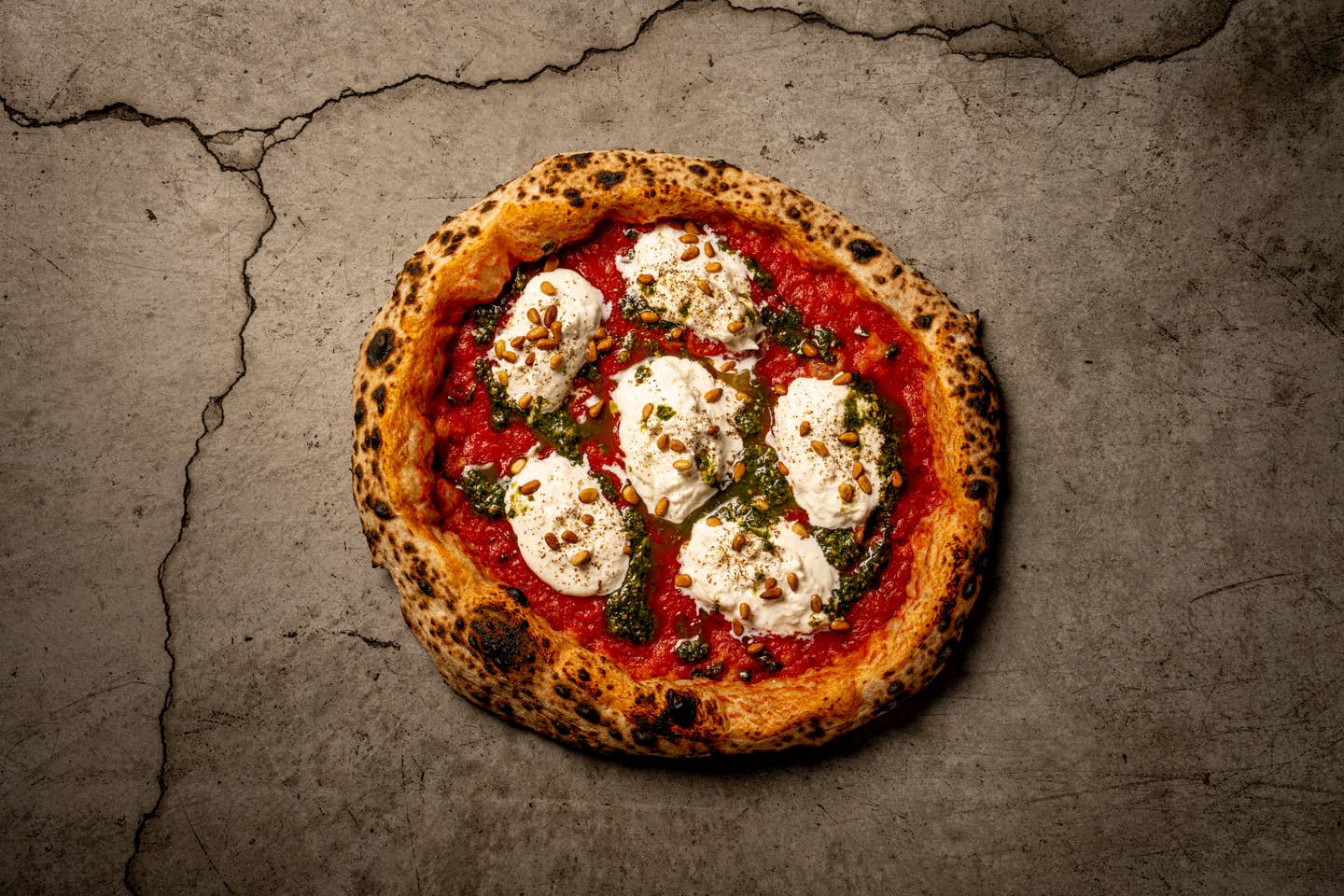
Carrer de l’Encarnació, 51
+34 931 376 385
Impressively sited in a cavernous white post-industrial space, Sartoria Panatieri has quickly established itself among Barcelona’s leading pizzerie and was even voted number one in Europe in a recent “50 Best” ranking. Pizzaioli Rafa Panatieri and Jorge Sastre use organic, kilometer-zero ingredients and cure their own guanciale and salchichón from rare-breed Gascón pork. Their Roman-style crust, blasted until crisp at the edges in a woodfired oven, is textbook, while the toppings skew more new-gen Spanish: sobrassada and Mahón cheese, wild fennel and honey, and escabeche carrot with goat ricotta, to name a few.
Carrer Jovellanos, 2
+34 933 171 829
Plant-based dining still feels somewhat novel in meat-loving Spain. But in Teresa Carles, open since 1979, Barcelona has one of the country’s true pioneers of the genre. Inspired by the Catalan flavors she grew up with, Carles sources fruits, vegetables, and mushrooms from her home village of Algerri (Lleida) and combines them with plant-based “fish” and “meat” to make dishes like hearty vegan escudella and an invigoratingly spiced Malaysian vegetable curry. The stone-fronted locale (also with a takeout section) is an airy, high-ceilinged space with bare brick walls and monochrome floor tiles. There’s nothing purse-lipped or pious about the vibe—a sign that in Barcelona, just maybe, vegetarian eating is finally coming of age.
Rambla de Prim, 6
+34 932 780 423
It’s easy to forget how close Barcelona is to France, geographically and culinarily—until you meet Romain Fornell, a Toulouse-born chef intent on spreading the gospel of la véritable cuisine française. I first sampled Fornell’s food back in the day at his posh, Ducasse-influenced hotel restaurant Diana, but the “Big Red Café” is far breezier. Sunlight off the Mediterranean floods into the high-ceilinged, white-walled interior, sited at the very end of the Avinguda Diagonal where it meets the sea at the Forum. The menu reads like a brasserie highlight reel: There’s pâté en croûte, onion soup made with Figueres onions and Comté cheese, and bouillabaisse with a puff-pastry crust. As if wagging his finger at Barcelona’s legion of flaccid tartes Tatins, Fornell’s is impeccably caramelized and crisp.
Mercat de Sant Antoni 18–21, Carrer del Compte d’Urgell, 1
+34 933 171 731
In its first life, Pinotxo (founded 1952) was a tiny bar near the entrance of La Boqueria market where shoppers stopped for a restorative drink and a tapa before schlepping their purchases home. With genial Juanito Bayén and his signature bowtie at the helm, Pinotxo became a pilgrimage site for rustic dishes like beef and potato fricandó, chickpea stew with blood sausage botifarra, and griddled shellfish, always made with market ingredients. So when Juanito passed away last year at 88, it was unclear whether his legacy would live on—until we learned that Pinotxo was reopening in the less touristy, newly restored Mercat de Sant Antoni. Juanito’s nephew Jordi, together with his wife Maria José and son Didac, are now at the helm, and they’ve sensibly changed nothing about the cooking. Perch on a barstool, get yourself a caña (half-pint) of beer or a glass of cava, and let them tell you what’s good today.
Carrer Riera Palau, 4
+34 933 607 211
Barcelona’s cocktail scene has something for every kind of fancy sipper, from the hardcore old-school (Dry Bar, Boadas) to the funky and eclectic (Florería Atlántica, Two Schmucks). But when it comes to contemporary cocktailery, Paradiso, the brainchild of Italian bar supremo Giacomo Giannotti, is hot to trot. From outside, Paradiso looks like a humble sandwich bar (side note: the home-cured pastrami might be the best outside Manhattan), but on most nights, there’s a line around the block. Climb through the door of an old-fashioned fridge, and you’ll soon see why. On a cocktail menu loftily titled “The History of Humanity,” you’ll spot ingredients like rose water, olive oil, saffron, sesame, and seaweed—resulting in high-concept mixology that’s breathtaking when it works, tiresome when it (occasionally) doesn’t. Smoke, mirrors, and VR headsets are all par for the course. Me? I’d like another slurp of the Fleming 1928, a hauntingly delicious concoction of tequila, Mancino vermouth, miso, beer syrup, coconut, grapefruit, and lemongrass.
Carrer Vallespir, 93
+34 934 088 023
Tucked behind Barcelona’s central rail station, La Mundana has managed to stay under the tourist radar. It’s the kind of place where neighbors pitch up on a weekend lunchtime for vermouth on the rocks, a ham croqueta or two, and a half-dozen oysters. For the rest of us, it’s a Barcelona gastro-bar, among the best of the variety, where Alain Guiard (ex Sant Pau, F12 Terrassen in Stockholm) and Marc Martín whip up original fusion dishes like pig’s-feet rice with bone marrow and a picada of tarragon and pistachios, and roast cauliflower with fried curry leaves and Café de Paris sauce. (Book well in advance.)
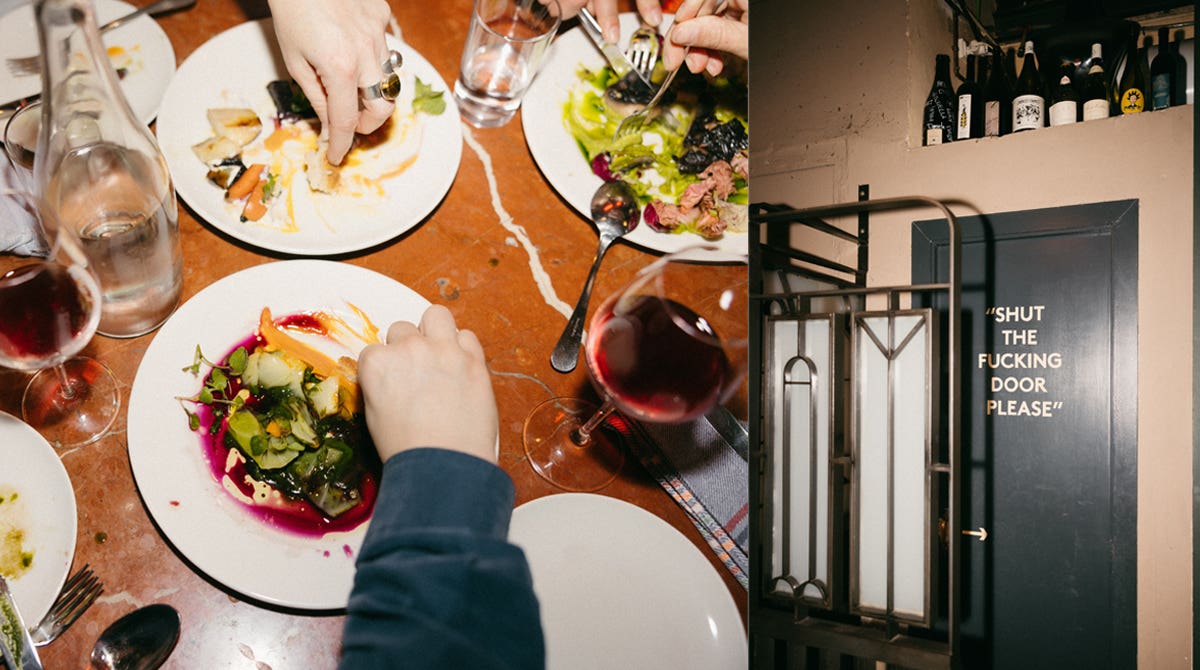
Carrer de la Princesa, 14 and Carrer Barra de Ferro, 1
+34 933 199 881 and +34 932 954 797
Can Cisa/Bar Brutal is the restaurant-bar where Spain’s natural wine revolution began back in 2013, when two vino-obsessed twins stumbled on a dilapidated old space near the Picasso Museum with a “For Rent” sign on the door. The twins in question, Max and Stefano Colombo, from Venice, Italy, had been packing them in at their fine Barcelona restaurant Xemei for nigh-on two decades. But with a little help from their friends, the Colombos created what was then a novelty for the city, offering hundreds of organic, natural and biodynamic wines, many served by the glass (look out for Catalan grape varieties such as xarel·lo and white garnatxa) along with Italian-inflected bar bites like porchetta sandwich, ox tartare with Cipriani sauce, and burrata with trout roe. The convivial atmosphere—not to mention the raffish charm of the interior with its formica tables and antique wooden chairs—makes for a great night out.
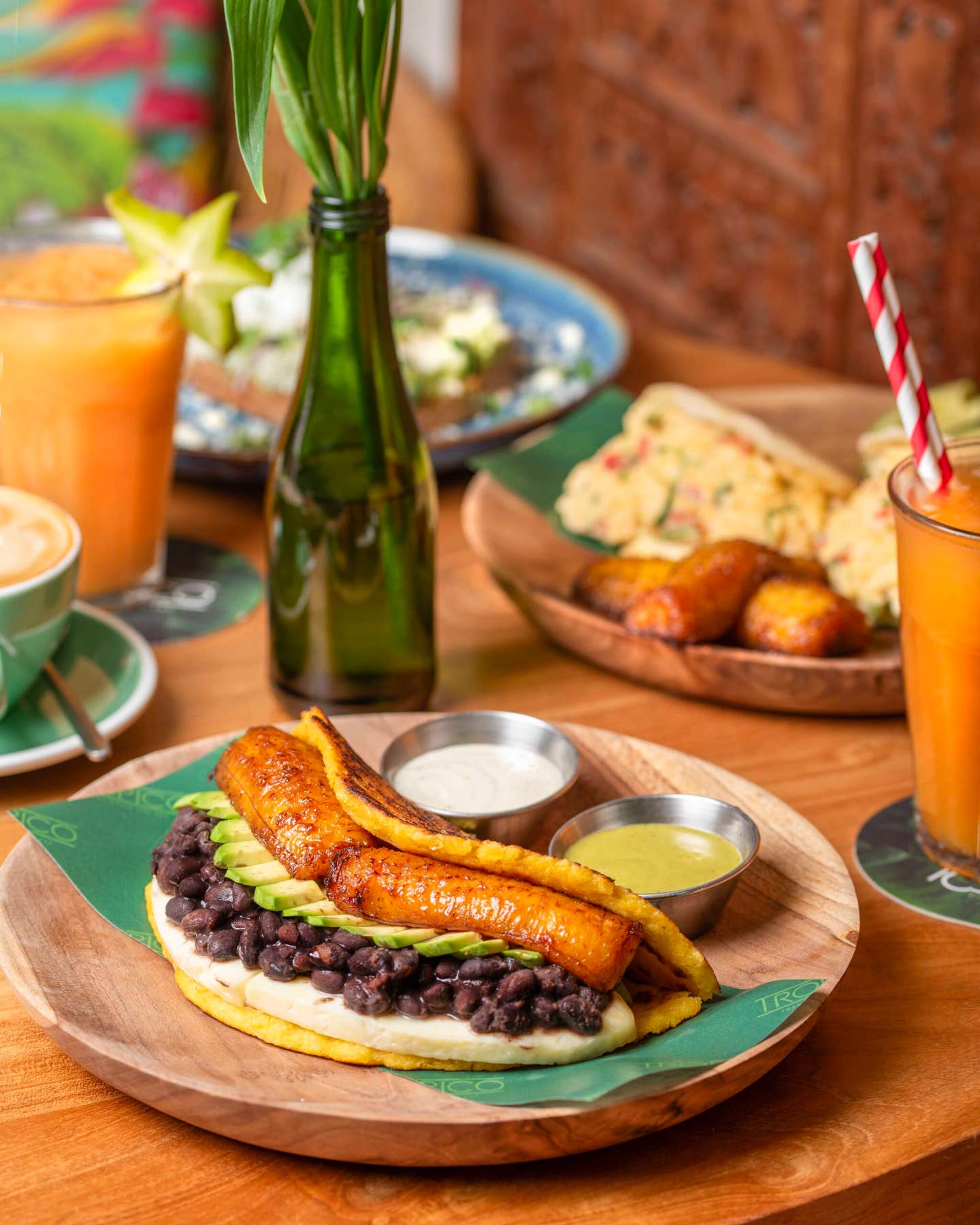
Trópico
Carrer Balmes, 24
+34 938 348 624
Barcelona has taken to the imported concept of brunch like a duck to water, finding it compatible with the lazing, grazing routines of the Spanish weekend. Venues in the city peddling avocado toast and eggs Benedict are two-a-penny these days, but few brunch spots go above and beyond as excitingly as Trópico. Brazilian chef Rodrigo Marco takes the globe-trotting schtick of his original Trópico in the Raval—in a nutshell, foods and drinks from between the Tropics of Cancer and Capricorn—and runs with it at this new place in the uptown Eixample. Playing out against the natural textures of the light-filled locale is a culinary fiesta that brims with the colors and flavors of the global South, zig-zagging from açaí and ají de gallina to Venezuelan cachapas stuffed with pabellón criollo and patacones with salsa hogao, cilantro, and costeño cheese. Marco’s coxinha, a deep-fried potato croquette stuffed with cheese and chicken, is a loving recreation of a Brazilian barroom staple (not to mention a surefire hangover remedy), while his fish moqueca, fragrant with coconut milk and dendê oil, may be the finest version of this Bahian classic anywhere in Spain.
Keep Reading
Continue to Next Story










